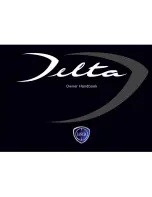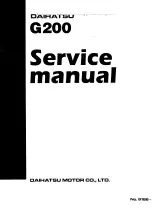
07 During your trip
Driving recommendations
07
288
General information
Economical driving conserves natural
resources
Better driving economy may be obtained by
thinking ahead, avoiding rapid starts and
stops and adjusting the speed of your vehicle
to immediate traffic conditions.
Observe the following rules:
•
Bring the engine to normal operating tem-
perature as soon as possible by driving
with a light foot on the accelerator pedal
for the first few minutes of operation. A
cold engine uses more fuel and is subject
to increased wear.
•
Whenever possible, avoid using the vehi-
cle for driving short distances. This does
not allow the engine to reach normal
operating temperature.
•
Drive carefully and avoid rapid accelera-
tion and hard braking.
•
Use the transmission's Drive (
D
) position
as often as possible and avoid using kick-
down.
•
Using the transmission's Sport mode
1
may increase fuel consumption some-
what. Use the transmission's Drive (
D
)
position as often as possible. See page
127 for additional information about Sport
mode.
•
Using the engine's optional Eco function
2
can help improve fuel economy. See
page 132 for additional information.
•
Do not exceed posted speed limits.
•
Avoid carrying unnecessary items (extra
load) in the vehicle.
•
Maintain correct tire pressure. Check tire
pressure regularly (when tires are cold).
•
Remove snow tires when threat of snow
or ice has ended.
•
Note that roof racks, ski racks, etc,
increase air resistance and also fuel con-
sumption.
•
At highway driving speeds, fuel consump-
tion will be lower with the air conditioning
on and the windows closed than with the
air conditioning off and the windows
open.
•
Using the onboard trip computer's fuel
consumption modes can help you learn
how to drive more economically.
Other factors that decrease gas mileage
are:
•
Dirty air cleaner
•
Dirty engine oil and clogged oil filter
•
Dragging brakes
•
Incorrect front end alignment
Some of the above mentioned items and oth-
ers are checked at the standard maintenance
intervals.
WARNING
Driving with the trunk open:
Driving with
the trunk open could lead to poisonous
exhaust gases entering the passenger
compartment. If the trunk must be kept
open for any reason, proceed as follows:
•
Close the windows
•
Set the ventilation system control to air
flow to floor, windshield and side win-
dows and the blower control to its
highest setting.
Weight distribution affects handling
At the specified curb weight your vehicle has
a tendency to understeer, which means that
the steering wheel has to be turned more
than might seem appropriate for the curva-
ture of a bend. This ensures good stability
and reduces the risk of rear wheel skid.
Remember that these properties can alter
with the vehicle load. The heavier the load in
1
Certain models only.
2
Available on certain 4-cyl. engines
Summary of Contents for 2015 S60
Page 1: ...WEB EDITION OWNER S MANUAL ...
Page 2: ......
Page 17: ...SAFETY ...
Page 55: ...01 Safety 01 53 ...
Page 56: ...54 Remote key and key blade 56 Valet locking 65 Keyless drive 66 Locks 69 Alarm 74 ...
Page 57: ...LOCKS AND ALARM ...
Page 79: ...YOUR DRIVING ENVIRONMENT ...
Page 80: ...03 Your driving environment Instruments and controls 03 78 Instrument overview ...
Page 147: ...03 Your driving environment 03 145 ...
Page 149: ...DRIVER SUPPORT ...
Page 213: ...COMFORT AND DRIVING PLEASURE ...
Page 240: ...05 Comfort and driving pleasure Passenger compartment convenience 05 238 Storage spaces ...
Page 245: ...INFOTAINMENT ...
Page 287: ...06 Infotainment 06 285 ...
Page 289: ...DURING YOUR TRIP ...
Page 307: ...WHEELS AND TIRES ...
Page 339: ...MAINTENANCE AND SPECIFICATIONS ...
Page 364: ...09 Maintenance and specifications Fuses 09 362 Engine compartment ...
Page 379: ...09 Maintenance and specifications 09 377 ...
Page 381: ...SPECIFICATIONS ...
Page 382: ...10 Specifications Label information 10 380 Location of labels ...
Page 405: ......
















































